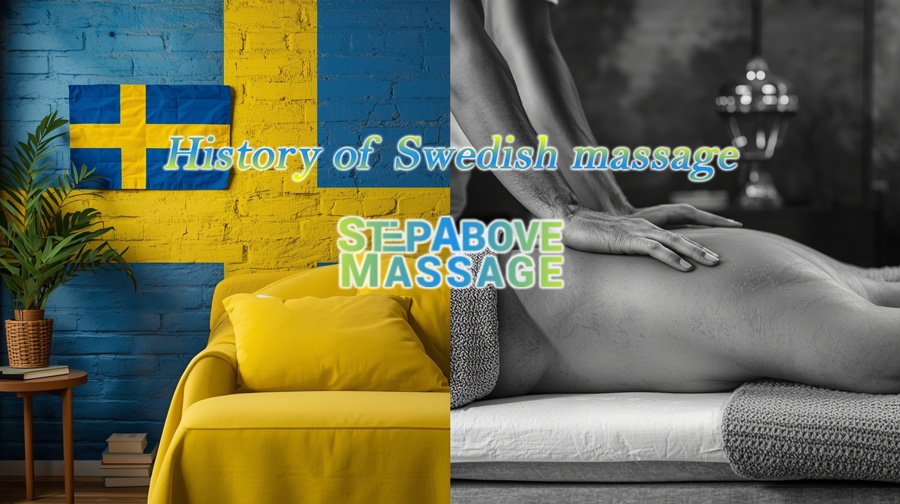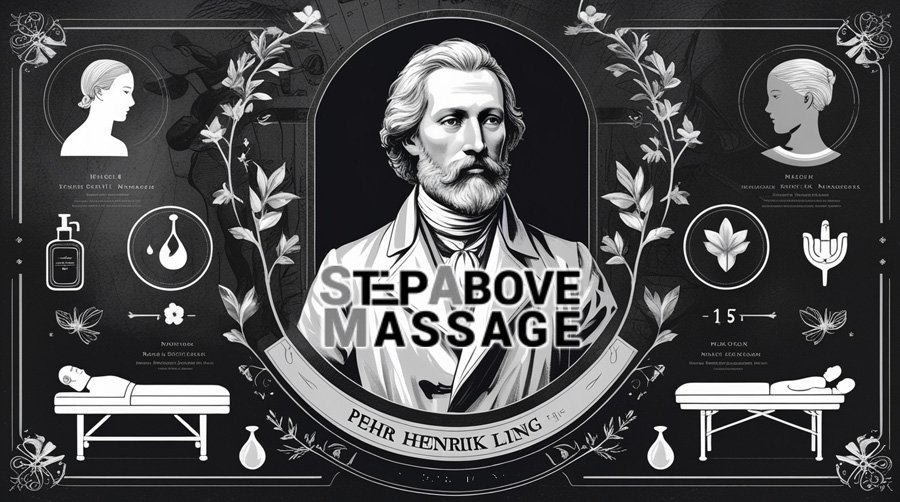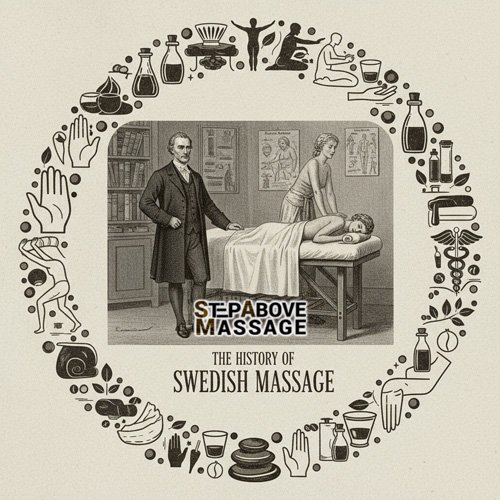
The question of who invented Swedish massage has intrigued wellness enthusiasts for decades. While often associated with relaxation and therapeutic benefits, its origin traces back to 19th-century Europe, blending gymnastics, medicine, and manual therapy. This article delves into the history of this technique, exploring key figures and developments without overlapping with general overviews of the practice itself.
Table of Contents
ToggleThe Roots of Swedish Massage
This method emerged during a time when physical health and movement were gaining scientific attention. Its foundation lies in the integration of ancient practices with modern anatomy.
Ancient Influences on Massage Therapy
Long before the formalization of this technique, manual therapies existed in various cultures. From Greek and Roman physicians using friction and kneading to Eastern traditions emphasizing energy flow, these methods influenced European thinkers. Techniques like cupping, which involved creating suction on the skin to promote healing, were part of early practices that shaped later developments. By the 18th century, European doctors began documenting body manipulation techniques, setting the stage for structured systems.
The Emergence in 19th-Century Europe
In the early 1800s, Sweden became a hub for innovative physical therapies. The industrial era brought increased awareness of bodily strain, prompting experiments in restorative practices. This period marked the origin of the method, as practitioners sought ways to enhance circulation and relieve tension through systematic touch. Early systems combined exercise with hands-on methods, evolving into what we now recognize as a cornerstone of wellness.
Key Pioneers in Swedish Massage Development
Two figures stand out in the history of Swedish massage: a Swedish innovator and a Dutch physician. Their work shaped what we recognize today.

Pehr Henrik Ling of Sweden and His Vision
Pehr Henrik Ling of Sweden, born in 1776, played a pivotal role in laying the groundwork. As a fencing master and poet, Ling suffered from health issues that inspired his pursuit of physical remedies. He developed a system known as Medical Gymnastics, focusing on active and passive movements to promote healing. This approach, sometimes referred to as the Swedish Movement System, integrated exercise with therapeutic touch.
Per Henrik Ling’s contributions extended to education, founding the Royal Gymnastic Central Institute in Stockholm in 1813. Here, he emphasized anatomy and physiology in training. While not directly inventing massage strokes, pehr henrik ling of sweden role in massage involved integrating movement therapies that influenced later manual techniques. Swedish Gymnastics, as his methods were often called, laid the foundation for holistic bodywork.
Peter Henrik Ling's Continuation
Peter Henrik Ling, the son of Per Henrik Ling, continued to develop his father’s system after his death in 1839. Sometimes simply referred to as Peter Ling in historical texts, he refined the techniques, ensuring the legacy of Medical Gymnastics persisted. His efforts helped bridge the gap between gymnastics and emerging massage practices, contributing to the broader per henrik ling contribution in history of massage.
Johann Georg Mezger's Systematic Approach
Johann Georg Mezger, a Dutch doctor born in 1838, is frequently credited as the true architect. Trained in medicine at Leiden University, Mezger specialized in friction methods, drawing from French traditions. His dissertation on these techniques highlighted their therapeutic potential.
Mezger formalized five core strokes using French terms: effleurage for gliding, petrissage for kneading, friction for rubbing, tapotement for tapping (which includes variations like hacking and pummelling), and vibration for shaking. This standardization helped distinguish the method, leading to its naming in some regions, though in Sweden it’s often called classic massage to differentiate it from Ling’s gymnastics.
Known as Dr Johann Mezger, he applied these in clinical settings, treating ailments like rheumatism. Johann Georg Metzger’s work built on Ling’s ideas, but he refined them into a cohesive system. Georg Mezger’s innovations spread through his students, solidifying his legacy. Johan Georg Mezger, or simply Johan Mezger as some records note, brought a scientific edge that elevated the practice.
When injuries occur, targeted bodywork accelerates healing by boosting blood flow to affected areas, delivering nutrients for repair and clearing inflammatory byproducts. A study from Harvard University shows that mechanical pressure, akin to massage, removes immune cells from damaged muscles, promoting stronger regeneration. Treated areas often show larger fiber sizes and better strength recovery compared to untreated ones.
This benefit extends to chronic conditions like tendonitis, where deep massage techniques alleviate pain and restore mobility. By reducing scar tissue and boosting mitochondrial activity, the therapy supports faster recovery timelines.
Debates Over Invention and Paternity
The query of who invented this technique sparks ongoing discussions. Attribution varies between Ling and Mezger, reflecting the collaborative nature of its evolution.
Who Is the Father of Swedish Massage?
Many call Per Henrik Ling the father of swedish massage due to his Swedish roots and early systems. However, historical analysis points to Mezger as the one who codified the techniques. Johan Georg Mezger’s precise definitions earned him recognition in medical circles.
Who is the father of swedish massage? It depends on whether one prioritizes foundational ideas or technical refinement. The father of massage therapy might broadly apply to ancient healers, but in this context, Mezger’s refinements stand out.
Clarifying Misconceptions in History
Misattributions arise from linguistic and national biases. In Sweden, it’s called classic massage, distancing it from Ling’s gymnastics. Johann Mezger’s French nomenclature confused origins, as some assumed a Gallic invention.
Father of massage? Perhaps no single person, but Mezger’s touch is undeniable. Who invented massage altogether? That’s a broader question, spanning millennia from Egyptian to Chinese roots. The Swedish Movement Cure, another term for Ling’s early work, sometimes gets conflated with the practice itself, adding to the confusion.
Global Spread and Evolution
This technique didn’t remain confined to Europe. Its journey reflects cultural exchanges and adaptations over time.
Introduction to the United States and Beyond
In the 1850s introduction to US, brothers Dr. Charles Taylor and Dr. George Taylor brought it to America, establishing clinics in New York. They promoted the method for health benefits, aligning with the growing interest in alternative medicine. This marked a key step in the early 20th century popularity of the practice across continents.
By the early 20th century, it gained traction in spas and hospitals worldwide. Its gentle nature made it accessible, contrasting with more intense therapies.
Modern Interpretations and Variations
Today, the meaning of this method encompasses relaxation-focused sessions. Who developed swedish massage into its current form? A combination of practitioners, including Mezger’s followers.
Its definition: a method using long strokes to promote well-being. Variations like aroma-infused versions build on the original, but the core remains unchanged, with techniques like cupping sometimes incorporated for enhanced effects.
Lasting Impact on Wellness
The history of this practice reveals a tapestry of innovation. From Pehr Henrik Ling’s gymnastic roots to Johann Georg Mezger’s medical precision, it evolved into a staple of therapy.
As wellness continues to grow, understanding these origins enriches appreciation for the method. In exploring who invented swedish massage, we see collaboration across borders. This narrative honors the pioneers while inviting modern enthusiasts to experience its timeless benefits.
If you want to experience the best Swedish massage in the Raleigh or Wake Forest area, look no further! Click to book your session at Step Above Massage and enjoy expert techniques that will leave you feeling refreshed and rejuvenated.

Common Questions
1. Who invented Swedish massage?
Answer: The core techniques of Swedish massage were systematized by Dutch physician Johan Georg Mezger, although it’s often mistakenly attributed to Pehr Henrik Ling.
2. What was Pehr Henrik Ling’s role in massage history?
Answer: Ling developed a form of medical gymnastics in Sweden that influenced later manual therapies, but he did not create Swedish massage.
3. What are the main techniques used in Swedish massage?
Answer: Swedish massage typically involves five techniques: effleurage, petrissage, friction, tapotement, and vibration.
4. How did Swedish massage spread to other countries?
Answer: Swedish massage gained international traction in the 19th and early 20th centuries, introduced to the U.S. by figures like George H. Taylor, a physician who studied Ling’s methods.



